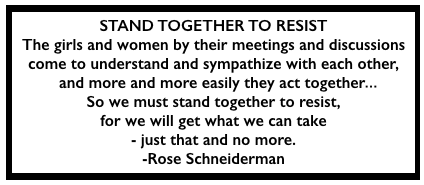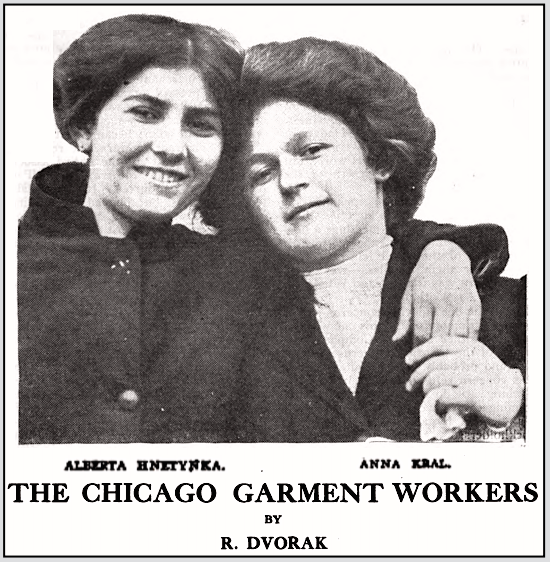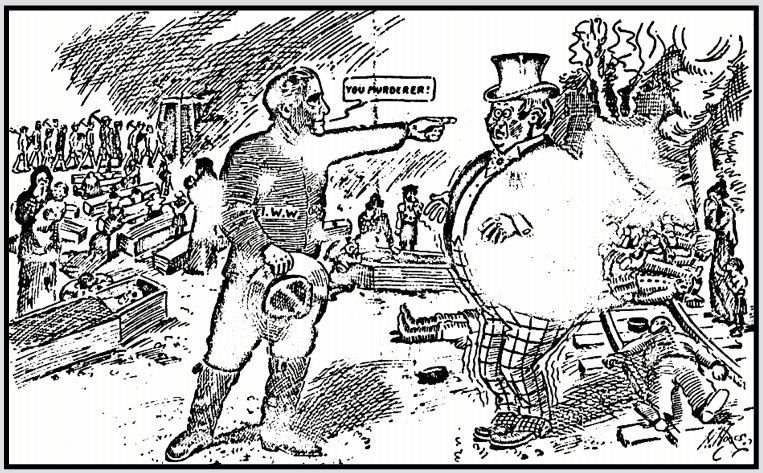 ———-
———-
Hellraisers Journal – Friday December 2, 1910
Chicago, Illinois – Report on Strike of 41,000 Garment Workers, Part I
From the International Socialist Review of December 1910:

[Part I.]
PERSONS who look upon the present Garment Workers’ strike in Chicago as a pure and simple labor battles are securing only an outward glimpse of the situation.
The strike itself, truly enough, was brought on by a revolt of the poor under paid girls and boys, men and women. It was a simultaneous upheaval of over 41,000 garment workers brought on by sixteen girls against petty persecution, low wages, abuse and long hours, an upheaval, unorganized at the start, which later took on the form of a fight for recognition of the union.
Behind the scenes, however, shut off from the public view, there is a mortal combat of big and small interests going on. A combat that is likely to settle, once for all, a battle of many years’ standing.
Like every other trustified industry, the production of clothing was at first limited to a number of independent manufacturers. These concerns unhampered by much competition grew to giant proportions.
Chicago, however, grew as rapidly as did the concerns. The city was soon divided into neighborhoods of various nationalities. Among these nationalities there were many venturesome persons who went into the tailoring business and made it a point to appeal to people of their own tongue.
Thus it was that gradually the business of the big concerns began to decrease. The more the city grew in population the more small tailor shops sprang up until they were growing, it seemed, over night, like mushrooms.
Continue reading “Hellraisers Journal: International Socialist Review: The Chicago Garment Workers Strike by Robert Dvorak, Part I” →
 ———–
———–

 ———-
———-